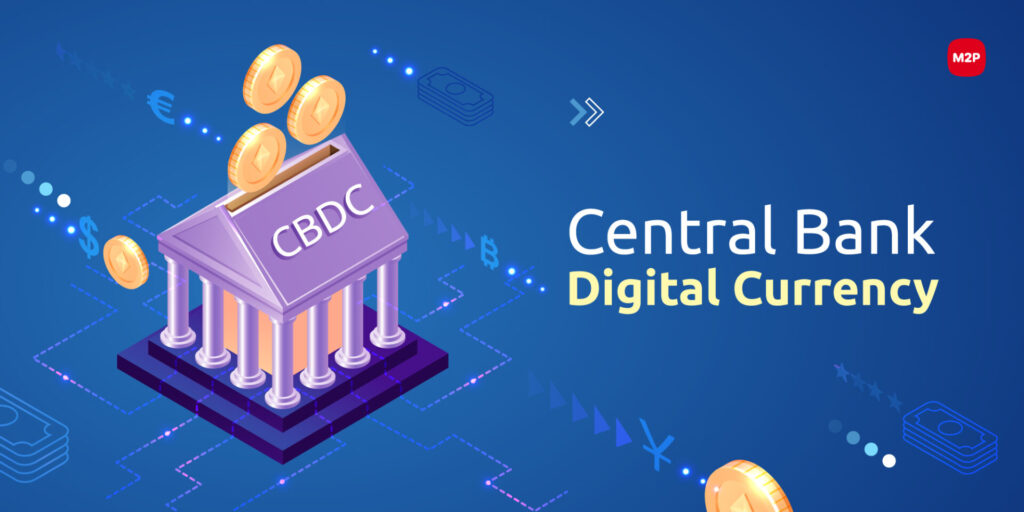Central Bank Digital Currencies (CBDCs) have been the talk of the financial world in recent years. It should come as no surprise that money is changing significantly as digitalisation continues to revolutionise every area of our lives. Digital equivalents of national currencies, or CBDCs, are being investigated or actively developed by central banks around the world. However, what are CBDCs precisely, and why are they growing in importance within the banking industry?
What Are Central Bank Digital Currencies?
Fundamentally, a digital version of a nation’s fiat currency, issued and controlled by the central bank of that country, is what a CBDC is. CBDCs are centralised as opposed to cryptocurrencies like Bitcoin, which are decentralised and run on blockchain technology without a central authority. This indicates that, similarly to actual cash, the central bank retains control over the currency.
CBDCs can be made for wholesale usage, which is only available to financial institutions for large-scale transactions, or for retail use, which is available to everyone. They provide a means of digitising money, which could lead to transactions being quicker, safer, and more effective than with conventional forms of payment.
Why Are Central Banks Exploring CBDCs?
Central banks are developing CBDCs due to a number of causes, including:
- Reduced Use of currency: As digital payments gain traction, there is a decrease in the usage of actual currency. CBDCs are viewed by central banks as a means of offering a safe, digital currency substitute that upholds the reliability and trustworthiness of central bank money.
- Competition from Cryptocurrencies: The emergence of stablecoins and cryptocurrencies has put established monetary systems under pressure. In a world where private digital currencies are becoming more and more popular, CBDCs provide a means for central banks to keep control over financial stability and monetary policy.
- Financial Inclusion: By offering digital financial services to unbanked or underbanked people, CBDCs have the potential to improve financial inclusion. In areas with restricted access to banking infrastructure, a Community Bank Digital Currency (CBDC) may be an affordable and easily obtainable way to engage in the digital economy.
- Efficiency and Security: By cutting down on the expenses and time involved in money transfers, digital currencies can increase the effectiveness of payment systems. Additionally, they can improve security by lowering the dangers of handling cash and fake currency.
- Monetary Policy Implementation: Central banks may be able to use CBDCs as a source of new tools for this purpose. They might permit the use of negative interest rates and more direct control over the money supply, for instance.
Global Developments in CBDCs
Many countries are already making significant strides in the development of CBDCs:
- China: The People’s Bank of China has been a trailblazer in this field, having launched its digital yuan (e-CNY) in several cities as a pilot program. It is anticipated that China’s CBDC will have a major impact on the economy of the nation and may have repercussions for international finance and trade.
- Europe: In an effort to preserve security and privacy while preserving the euro’s stability as a currency in the digital age, the European Central Bank is investigating the possibility of a digital euro.
- United States: The Federal Reserve is proceeding cautiously, gathering a great deal of information and thinking through the possible effects of a digital currency on the financial system.
- Caribbean: With the goal of promoting financial inclusion and strengthening payment systems, a few Caribbean countries, such as the Bahamas with its Sand Dollar, have already introduced their own CBDCs.

Challenges and Concerns
CBDCs have a number of possible advantages, but they also bring up a number of issues and worries.
- Privacy: Maintaining transaction privacy while stopping illegal actions like fraud and money laundering requires careful consideration. CBDCs raise privacy and surveillance issues since they may allow central banks to acquire financial data about citizens in a way never before possible.
- Cybersecurity: Cyberattacks can target CBDCs, just like they can any other digital system. To avoid financial instability, digital money security must be guaranteed.
- Effect on Banks: The conventional banking system may be affected by the establishment of CBDCs. A decline in lending could result from consumers choosing to keep their CBDCs directly with the central bank as opposed to in commercial bank accounts, which would lessen the role of banks in the financial system.
- Monetary Sovereignty: The widespread acceptance of a foreign CBDC (such as the digital dollar or euro) may weaken the monetary sovereignty of weaker countries and result in “digital dollarization.”
The Future of CBDCs
There are still a lot of unknowns in the early phases of CBDC development. Nonetheless, it’s evident that CBDCs have the power to fundamentally alter the global financial system. They might facilitate payments more quickly, securely, and easily, but they also come with trade-offs that need to be carefully considered.
Central banks must negotiate the difficulties of upholding financial stability, guaranteeing privacy, and adjusting to a digital world that is evolving quickly as they investigate this new kind of money further. The emergence of CBDCs heralds a new age in finance and has the potential to drastically change our perception of money and its significance in our lives. The question now is not whether but rather when and how CBDCs will be put into effect.

